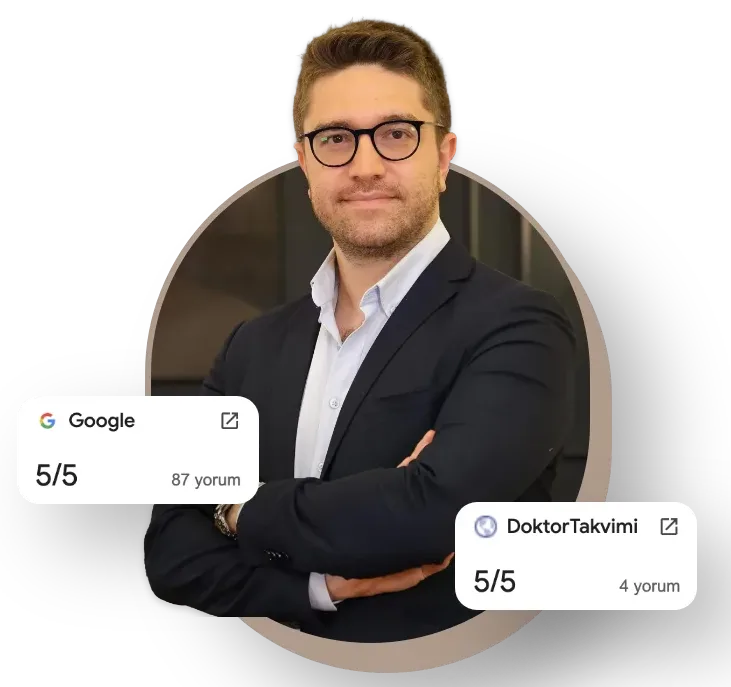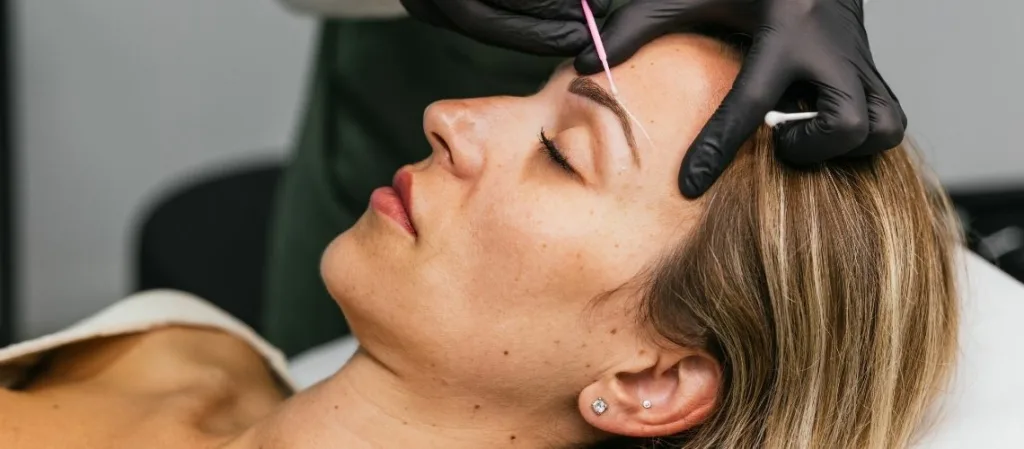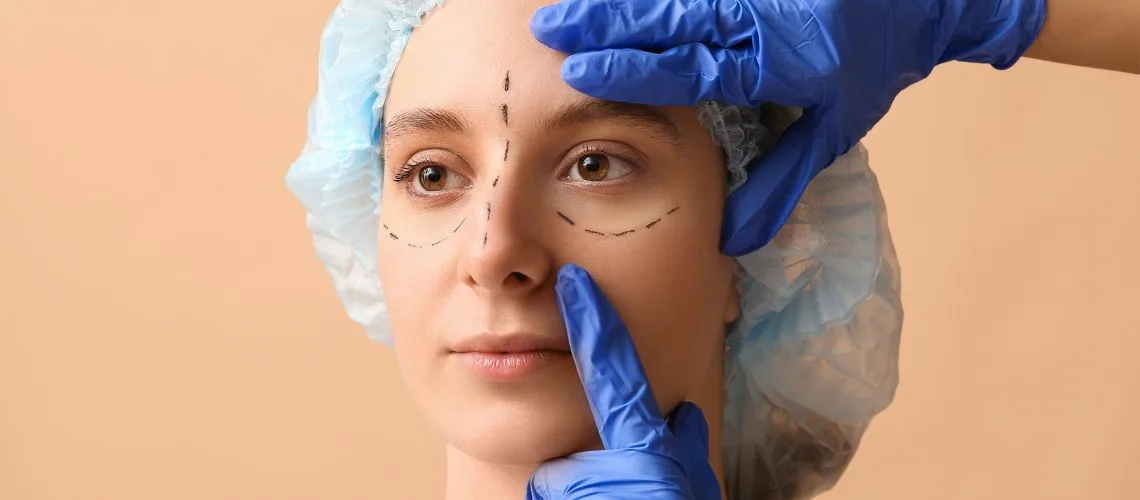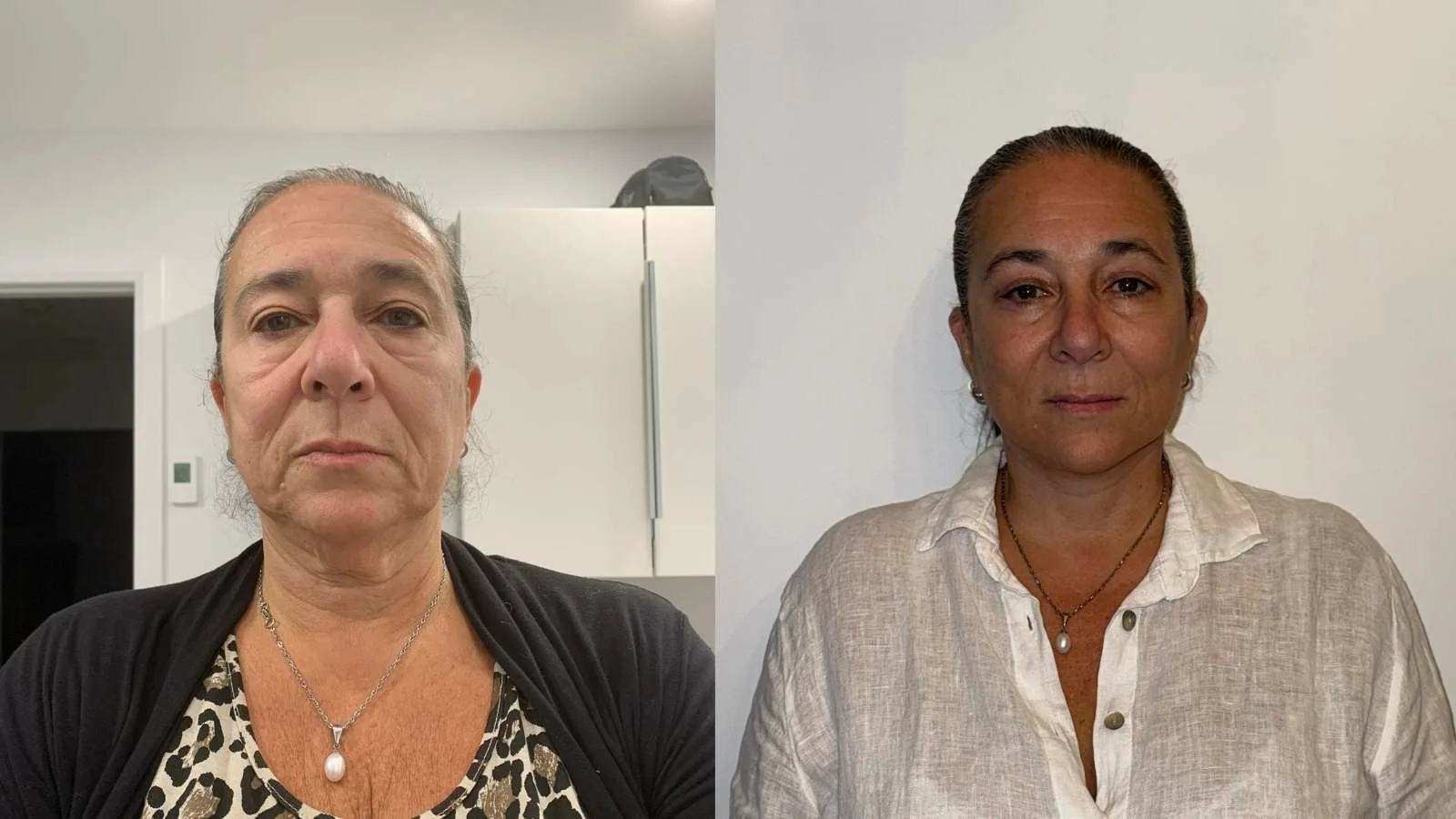Drooping eyebrows, also known as brow ptosis, occurs when the brow descends below its natural position, creating a tired or aged appearance. Treatment options include botulinum toxin, thread lifting, or surgical brow lift depending on severity and patient needs.
Non-surgical approaches such as botulinum toxin injections can provide temporary elevation by relaxing specific muscles. These methods are suitable for mild cases and offer quick recovery with minimal downtime.
Minimally invasive treatments like thread lifts reposition tissues using absorbable sutures. This method provides moderate improvement and can be an alternative for patients who prefer less invasive options.
Surgical brow lift remains the most effective solution for advanced cases. It corrects tissue laxity, restores youthful contour, and provides long-lasting results while improving both aesthetic appearance and field of vision.
| Causes of Occurrence | – Aging: Decreased skin elasticity.- Genetic Factors: Naturally low eyebrow structure.
– Nerve Damage: Conditions such as paralysis. – Gravity: Eyebrows gradually descending over time. |
| Symptoms | Eyebrows positioned lower, sagging around the eyes, narrower eye appearance, tired expression. |
| Treatment Methods | – Botox: Used to slightly lift the eyebrows.- Filler Applications: Adds volume around the eyebrows.
– Thread Suspension: Non-surgical method for lifting the eyebrows. – Brow Lift Surgery: Permanently lifts the eyebrows through a surgical procedure. |
| Treatment Advantages | A more dynamic, youthful, and energetic appearance, a more balanced facial expression. |
| Risks and Side Effects | Swelling, redness, mild asymmetry, infection (rare in surgical interventions). |
| Treatment Duration | Botox and filler procedures take 15-30 minutes, brow lift surgery takes 1-2 hours and requires 1-2 weeks of recovery. |
| Preventive Measures | – Regular care for the eye area and forehead.- Sun protection and moisturizing.
– Avoid excessive facial expressions. |
What Is Brow Ptosis and Why Does It Occur?
Brow ptosis is the condition in which the eyebrows descend below their normal position. It usually arises due to aging, genetic factors, or muscle or nerve issues. This condition can lead to both aesthetic and functional problems. The main causes of brow ptosis are:
- Aging
Loss of skin elasticity and weakening of the tissues in the forehead area, causing the eyebrows to move downward.
- Genetic
Being born with naturally low eyebrows.
- Facial nerve palsy
Loss of function in the nerves that control the forehead muscles.
- Trauma
Damage to the muscles or nerves from impacts to the eyebrow area.
- Muscle weakness
Insufficient strength of the muscles in the forehead and around the eyes.
- Diseases
Conditions such as myasthenia gravis affecting the muscles that lift the eyebrows.
Brow ptosis can make an individual appear tired, unhappy, or older. In advanced cases, it can narrow the field of vision and make daily activities more difficult. While brow ptosis can be seen at a young age due to genetic reasons, causes like trauma and facial nerve palsies may lead to a sudden onset. This situation can affect a person’s quality of life and increase the need for treatment.
What Are the Types of Brow Ptosis?
Brow ptosis is an aesthetic and functional condition that occurs when the eyebrows drop below their normal anatomical position.
It can result from aging, genetic factors, or nerve damage. Brow ptosis can be classified in several ways:
- Medial Brow Ptosis: The inner part of the eyebrow (near the nose) droops downward.
- Lateral Brow Ptosis: The outer part of the eyebrow (near the temples) droops; this is the most common form.
- Total Brow Ptosis: The entire eyebrow shows a noticeable downward displacement.
- Asymmetric Brow Ptosis: There is a difference between the two eyebrows; one may be positioned lower than the other.
- Neurogenic Brow Ptosis: Develops as a result of conditions such as facial nerve paralysis.
How Does Brow Ptosis Affect Vision and Appearance?
Brow ptosis can affect both visual function and facial aesthetics. When the eyebrows droop downward, they can press on the upper eyelid and narrow the field of vision, making daily life more difficult. At the same time, it creates a noticeable change in facial expression, causing the individual to appear older, more tired, or sadder than they actually are.
Effects on Vision:
- Narrowing of the upper visual field
- Pressure and drooping of the eyelids
- The eyelid descending onto the eyelashes
- Involuntary raising of the eyebrows to correct the visual angle
- Needing to tilt the head backward
- Pain and tension in the neck and head area
Aesthetic Effects:
- An older and more tired appearance
- Creating a sad facial expression
- Changes in expression due to eyelid drooping
- Loss of self-confidence in social interactions
- Even if one feels energetic and happy, projecting a different impression from the outside
Brow ptosis is not only an aesthetic issue but also a problem that affects daily life quality. Particularly in advanced cases, it can negatively affect a person’s lifestyle and overall health. If left untreated, both visual problems and aesthetic concerns may progressively worsen. Therefore, appropriate treatment methods can provide improvements both functionally and aesthetically.
Which Surgical Procedures Are Available to Correct Brow Ptosis?
Various surgical methods are available for brow ptosis. Each method has its own advantages and way of application. The choice of which method to use is determined by the patient’s needs, the severity of brow ptosis, and the facial structure:
- Direct brow lift
- Endoscopic brow lift
- Mid-forehead lift
- Hairline brow lift
- Temporal (lateral) brow lift
- Internal brow fixation
- Combination techniques
These surgical methods not only meet aesthetic expectations but also help solve functional problems. For example, more invasive methods may be preferred for severe drooping affecting the visual field, while minimally invasive techniques may suffice for mild ptosis. The postoperative process may vary depending on the method; factors such as recovery time, visibility of scars, and the permanence of results are included in this consideration.
How Is the Appropriate Surgical Technique Determined for Brow Ptosis?
In treating brow ptosis, the appropriate surgical technique is determined by the patient’s individual characteristics, the severity of the brow ptosis, and the desired outcome. During this process, the surgeon conducts a detailed evaluation to choose the most suitable method.
Mild brow ptosis:
- Eyelid surgery
- Brow suspension procedures
Moderate to severe brow ptosis:
- Endoscopic methods
- Direct brow lift
Factors related to anatomical structure:
- Forehead structure
- Skin elasticity
- Hairline
Methods preferred based on expectations:
- Procedures that leave minimal scarring for aesthetic results
- Surgeries aimed at expanding the field of vision
When planning the surgical procedure, the specialist also considers the patient’s overall health status. Bleeding disorders, diseases that could affect the healing process, or previous facial aesthetic surgeries can be decisive in selecting the surgical method. Additionally, providing the patient with detailed information about possible complications after the surgery ensures an informed decision-making process. The correct technique selection aims not only for an aesthetic improvement but also a functional solution.
What Are the Risks and Benefits of Surgical Treatment for Brow Ptosis?
Surgical treatments for brow ptosis provide both aesthetic and functional improvements, but they may also come with certain risks. The treatment generally aims to reposition the eyebrows to a more youthful position, thereby addressing both visual and functional issues.
Benefits:
- Expansion of the visual field
- A younger and more energetic appearance
- Reduction in forehead muscle-related headaches
Risks:
- Wound and scar formation during the healing process
- Risk of asymmetry between the eyebrows
- Possibility of infection
- Numbness due to nerve damage
- Temporary or permanent hair loss
- Hematoma (accumulation of blood)
- Changes in skin sensation
- Unexpected aesthetic outcomes
The surgical technique used during the brow lift procedure can influence both the level of benefits and the level of risks. For example, endoscopic methods tend to leave less scarring, while traditional techniques may result in more noticeable scars.
What Is the Recovery Process Like After Brow Ptosis Surgery?
The recovery process after brow ptosis surgery proceeds more comfortably and quickly when the patient follows the recommended care instructions. There are important points to be cautious about from the very first days, and the process is generally completed within a few months:
- Use of eye drops and ointment,
- Regular application of cold compresses during the initial days,
- Keeping the head elevated,
- Avoiding physical activities,
- Maintaining hygiene of the surgical area,
- Taking the medications prescribed by the doctor regularly.
During the first week after surgery, mild pain, swelling, and bruising may occur. These symptoms usually decrease and disappear over time. Stitches are typically removed within 7-10 days, and the patient can resume light daily activities. However, it is important to avoid heavy work and intense physical activities.
In the 2nd or 3rd week of the recovery period, swelling significantly diminishes. As the patient’s overall condition improves, physical activities can gradually be increased. Strenuous sports should not be started without the doctor’s approval.
At the end of three months, the final results of the surgery become visible as the swelling around the eyes completely subsides. During this period, it is important for the patient to pay attention to their general health. Post-surgery results provide a natural and youthful appearance that suits the individual’s facial structure. Regular follow-up appointments in the post-surgery period are critically important for monitoring the healing process and ensuring patient satisfaction.
References
- Matarasso, A., & Matarasso, S. L. (2001). Browlifting: Current techniques. Plastic and Reconstructive Surgery, 108(6), 1409-1424.
- Knize, D. M. (2009). An anatomically based study of the mechanism of eyebrow ptosis. Plastic and Reconstructive Surgery, 123(5), 1320-1327.
- Carruthers, A., & Carruthers, J. (2007). Eyebrow shape and perceived age: Quantitative analysis. Dermatologic Surgery, 33(1), 126-131.
- Lambros, V. S. (1997). Observations on periorbital and midface aging. Plastic and Reconstructive Surgery, 99(6), 1360-1366.
Frequently Asked Questions
What causes eyebrow ptosis?
Eyebrow ptosis can develop due to loss of skin elasticity with aging, genetic factors, muscle weakness, or previous trauma. Loosening of the tissues around the eyes also contributes to this condition.
Does eyebrow ptosis affect the visual field?
Yes, especially in advanced cases, drooping brows can press on the eyelids and narrow the visual field. This may cause both aesthetic concerns and functional problems.
At what age is eyebrow ptosis more common?
It usually appears after the age of 40 due to the loosening of skin and connective tissue. However, it may also occur at a younger age due to genetic predisposition.
Can eyebrow ptosis be corrected with Botox?
Mild cases can be improved with Botox to lift the brows. However, surgical methods are more effective for advanced ptosis.
What surgical methods are used to treat eyebrow ptosis?
The most common procedures are forehead lift, endoscopic brow lift, and temporal lift. The choice depends on the patient’s needs.
What is the recovery process after eyebrow lift surgery?
Swelling and bruising usually subside within a few days. Most patients return to social life within 1–2 weeks. Final results become more visible after a few months.
Are the results of eyebrow ptosis treatment permanent?
Surgical results are long-lasting. However, since aging continues, some sagging may reoccur over time.
Can eyebrow ptosis trigger migraine headaches?
In some patients, drooping brows cause tension in the forehead and eye muscles, which can increase headaches. After treatment, these complaints may improve.
Can eyebrow lift be combined with eyelid surgery?
Yes, in many patients eyebrow ptosis is accompanied by eyelid sagging. Performing both procedures in the same session provides more balanced and natural results.
How does eyebrow ptosis affect appearance?
Drooping brows give a tired, sad, or older look. A brow lift restores a younger, fresher, and more dynamic facial expression.

Op. Dr. Erman Ak is an internationally experienced specialist known for facial, breast, and body contouring surgeries in the field of aesthetic surgery. With his natural result–oriented surgical philosophy, modern techniques, and artistic vision, he is among the leading names in aesthetic surgery in Türkiye. A graduate of Hacettepe University Faculty of Medicine, Dr. Ak completed his residency at the Istanbul University Çapa Faculty of Medicine, Department of Plastic, Reconstructive and Aesthetic Surgery.
During his training, he received advanced microsurgery education from Prof. Dr. Fu Chan Wei at the Taiwan Chang Gung Memorial Hospital and was awarded the European Aesthetic Plastic Surgery Qualification by the European Board of Plastic Surgery (EBOPRAS). He also conducted advanced studies on facial and breast aesthetics as an ISAPS fellow at the Villa Bella Clinic (Italy) with Prof. Dr. Giovanni and Chiara Botti.
Op. Dr. Erman Ak approaches aesthetic surgery as a personalized art, tailoring each patient’s treatment according to facial proportions, skin structure, and natural aesthetic harmony. His expertise includes deep-plane face and neck lift, lip lift, buccal fat removal (bichectomy), breast augmentation and lifting, abdominoplasty, liposuction, BBL, and mommy makeover. He currently provides safe, natural, and holistic aesthetic treatments using modern techniques in his private clinic in Istanbul.









